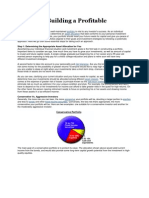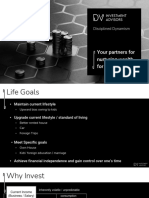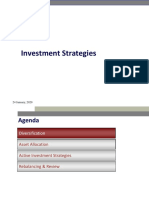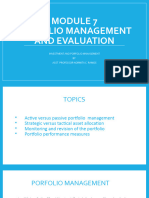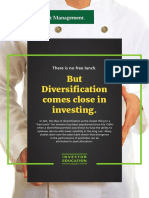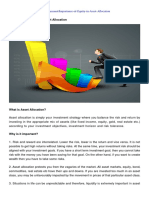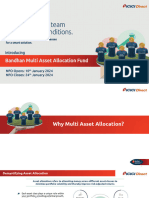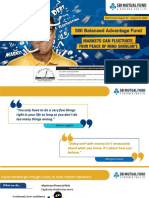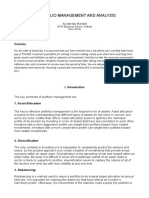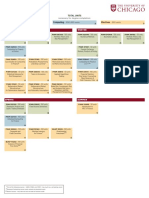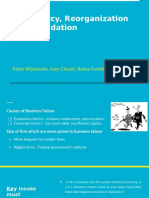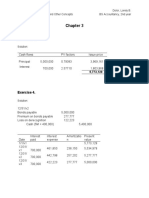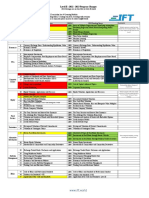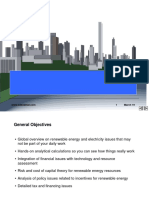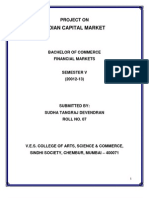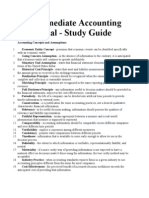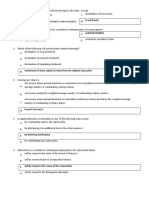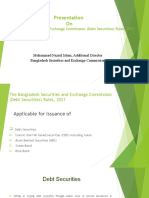Asset Allocation
What is Asset Allocation?
Asset allocation is the process of determining what mix of
assets to hold in your investment portfolio. Some of the
asset classes where you can invest are Equity, Debt, Real
Estate, Gold, and Cash. The objective of an asset
allocation plan is to help you achieve your financial goals
with a degree of risk that you are comfortable with.
Different Asset Classes
Within each of the asset classes, there are several subclasses that you can invest in to build a truly diversified
portfolio that will help you achieve your financial goals.
EQUITY
Large Cap
With market cap greater that 30,000 cr.;
these stocks tend to be less volatile
because large companies are more
mature
Mid Cap
With market cap between 15,000 cr.
and 30,000 cr.; these stocks tend to be
more volatile
Small Cap
With market cap less than 15,000 cr.;
these stocks are very risky but could
give a higher return
Sector Specific
Stocks belonging to different sectors
like FMCG, Pharma, Infrastructure,
Banking
Value Stocks
Typically these are well-established
stocks, but have temporarily fallen out
of favor with the market
Growth Stocks
Typically these stocks exhibit higher
growth in income and revenue
compared to the overall market
DEBT
Government Securities
These could be short-term or longterm. They have lower risk because
they are backed by central or state
government.
Corporate Bonds/NCDs
These are issued by public or private
corporations. These securities could be
secured or unsecured.
Fixed Deposits
Is a sum of money given to a bank or
corporation, wherein the investor is
paid a fixed interest rate over a fixed
period of time
OTHER
Cash
Current and Savings Accounts
Real Estate
Could be commercial or residential
Commodities
Gold, silver, oil, and other commodities
�Why is Asset Allocation important?
1. Magic of Portfolio Diversification. The performance of different asset classes varies over time, as
shown in the chart, Winners Change. By investing in several asset classes, you may improve your
chances of benefiting from market gains, and lower the impact of poor performing asset categories on
your overall portfolio returns. Allocating your investments among different asset classes reduces
portfolio risk and improves your chances to earn a more consistent return.
Best
Winners Change - Annual % Return of Different Asset Classes (2006-2014)
2014
2012
2011
2010
7.9%
Crisil Liquid
33.5%
Fund Index
BSE Healthcare
5.9%
Crisil Composite
27.8%
Bond Fund Index
BSE FMCG
2009
2007
7.6%
Crisil Liquid
Fund Index
2.9%
Crisil Composite
Bond Fund Index
117.3%
BSE Capital
Goods
2006
92.9%
BSE Midcap
46.7%
SENSEX
56.4%
BSE Capital
Goods
-21.2%
BSE FMCG
74.2%
BSE Smallcap
39.8%
BSE IT
55.%
BSE IT
48.6%
BSE Midcap
20.9%
BSE Healthcare
45.6%
BSE FMCG
48.7%
BSE Healthcare
10.4%
BSE FMCG
37.2%
BSE Healthcare
2.4%
BSE FMCG
26.2%
BSE IT
115.2%
BSE Smallcap
104.3%
BSE Capital
Goods
47.2%
BSE Midcap
8.8%
SENSEX
8.8%
Crisil Liquid
Fund Index
4.4%
Crisil Composite
Bond Fund Index
36.5%
BSE Smallcap
34.7%
BSE Capital
Goods
-14.2%
BSE Healthcare
17.4%
SENSEX
100.4%
BSE Midcap
-35.3%
BSE Healthcare
47.1%
SENSEX
33.8%
BSE Midcap
-17.6%
BSE IT
16.7%
BSE Smallcap
81.%
SENSEX
-52.4%
SENSEX
25.1%
BSE FMCG
28.2%
BSE Smallcap
-24.6%
SENSEX
-.2%
BSE Midcap
-5.8%
BSE Capital
Goods
25.7%
SENSEX
9.9%
Crisil Composite
Bond Fund Index
8.6%
Crisil Liquid
Fund Index
-10.1%
BSE Smallcap
.8%
BSE IT
19.2%
BSE FMCG
17.8%
BSE IT
11.6%
Crisil Composite
Bond Fund Index
9.3%
Crisil Liquid
Fund Index
-32.8%
BSE Midcap
-36.4%
BSE Smallcap
-47.7%
BSE Capital
Goods
133.6%
BSE IT
2008
63.8%
BSE Smallcap
50.8%
BSE Capital
Goods
30.1%
SENSEX
Worst
2013
16.3%
75.9%
BSE Midcap
BSE Healthcare
9.2%
BSE Capital
46.6%
Goods
BSE FMCG
5.4%
9.6%
Crisil Composite Crisil Composite
Bond Fund Index Bond Fund Index
4.3%
6.3%
Crisil Liquid
Crisil Liquid
Fund Index
Fund Index
-52.8%
BSE IT
-60.4%
BSE Midcap
-65.%
BSE Capital
Goods
-68.8%
BSE Smallcap
17.3%
19.3%
BSE Healthcare BSE Healthcare
7.5%
Crisil Liquid
12.8%
Fund Index
BSE FMCG
6.3%
5.7%
Crisil Composite Crisil Liquid
Bond Fund Index
Fund Index
3.5%
-10.4%
Crisil Composite
BSE IT
Bond Fund Index
Source: BSE, CRISIL; Data as of Oct 2015
2. Stay Focused on Your Goals. A well-allocated portfolio prevents the need to constantly adjust
investment positions to chase market trends. It can help reduce the urge to buy or sell in response to
the markets short-term ups and downs.
�Does Asset Allocation really work?
Yes. As the chart below shows, a consistent asset allocation over time improves your chance to earn a more
consistent return with lesser volatility. For each asset class, the green number represents the Best Year Return
between 2006 & 2014. The blue number represents the Annual Return from 2006 to 2014. The red number
represents the Worst Year Return between 2006 & 2014. The Asset Allocation portfolio (with all the 5 asset
classes in equal proportion) earns a consistent return with lesser risk or volatility.
Average Annual Return from 2006 2014
Worst Year Return from 2006 2014
Best Year Return from 2006 2014
(1) Crisil Composite Bond Fund Index
(2) Crisil Liquid Fund Index
(3) Portfolio with all 5 asset classes in equal proportion
The example below shows that being patient and following a consistent asset allocation strategy will pay-off in
the long term.
Asset Allocation - 70% Equity; 30% Bond **
Choosing Last Years Winner - Investing in
last years best performing asset class
Total Investment
Value in 9 Years*
9-Year CAGR*
Rs. 1,00,000
Rs. 2,86,179
12.40%
Rs. 1,00,000
Rs. 1,56,762
5.10%
* Using NIFTY and CRISIL Composite Bond Fund Returns over 9 years from 2006 - 2014
** Equity is represented by NIFTY and Bond is represented by the Crisil Composite Bond Fund Index; assumes annual rebalancing of the portfolio
�How do you determine your Asset Allocation?
The typical rule is to subtract your age from 110 and invest that amount in equity. The equity asset class has
historically given the highest return, but also has the maximum volatility over time*. For example, at age 25,
you should have 85% of your assets in equity. But, this is just a rule of thumb. Each individual has different
needs and goals. Therefore, each individual portfolio will need a different asset allocation based on the
following
1. Financial Goals Your liquidity needs at different points in life. For example, marriage, house,
childrens education, retirement, etc.
2. Time Horizon What is your time horizon for each of the financial goals
3. Risk Tolerance How much risk are you willing to take at different stages of your life
*Past performance does not guarantee future returns.
Which Asset Allocation is right for me?
Conservative Asset Allocation
Equity - 20%; Debt - 70%; Cash - 10%
(Equity - NIFTY; Debt - Crisil Composite Bond
Fund Index; Cash = 0% return)
Annual Return (2006-2014)
Best Year Return
Worst Year Return
Cash
10%
Equity
20%
7.6%
30.3%
Debt
70%
-15.5%
A portfolio with a conservative asset allocation
is for those investors that would like to
conserve their wealth, but keep ahead of
inflation.
Moderately Aggressive Asset Allocation
Equity - 50%; Debt - 40%; Cash - 10%
(Equity - NIFTY; Debt - Crisil Composite Bond
Fund Index; Cash = 0% return)
Annual Return (2006-2014)
Best Year Return
Worst Year Return
Cash
10%
9.5%
Debt
40%
62.2%
Equity
50%
-33.8%
A portfolio with a moderately aggressive
asset allocation gives a balance of income and
growth. This is meant for investors with a
medium term horizon and a moderate level
of risk tolerance.
Aggressive Asset Allocation
Equity - 80%; Debt - 10%; Cash - 10%
(Equity - NIFTY; Debt - Crisil Composite Bond
Fund Index; Cash = 0% return)
Annual Return (2006-2014)
11.3%
Best Year Return
94.1%
Worst Year Return
-46.0%
Cash
10%
Debt
10%
Equity
80%
A portfolio with an aggressive asset allocation
provides aggressive capital growth over a
longer time horizon. This portfolio has a
higher risk and therefore, more volatility over
the short-term.



















